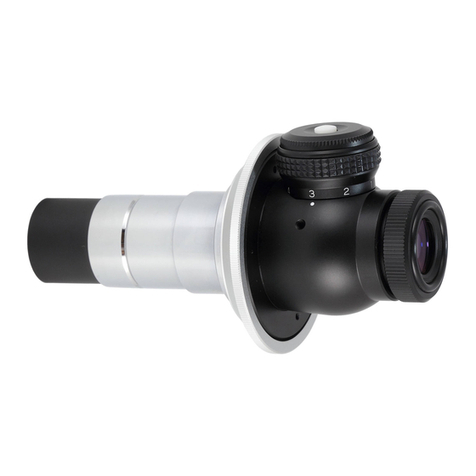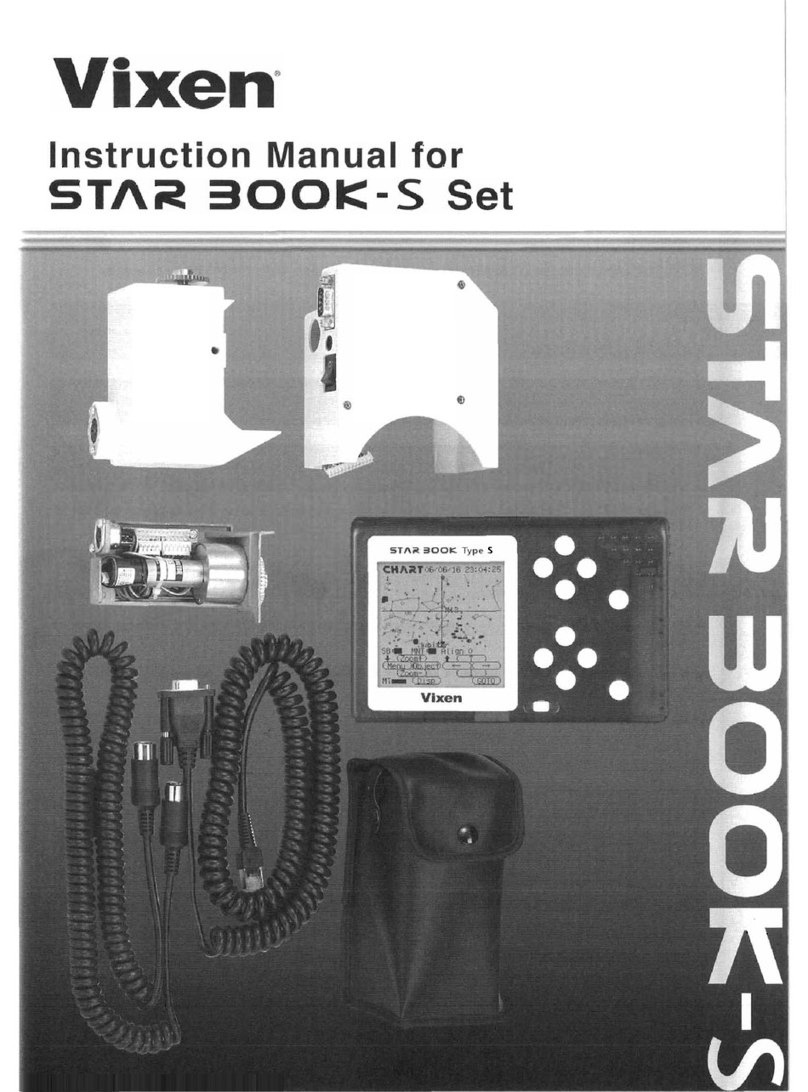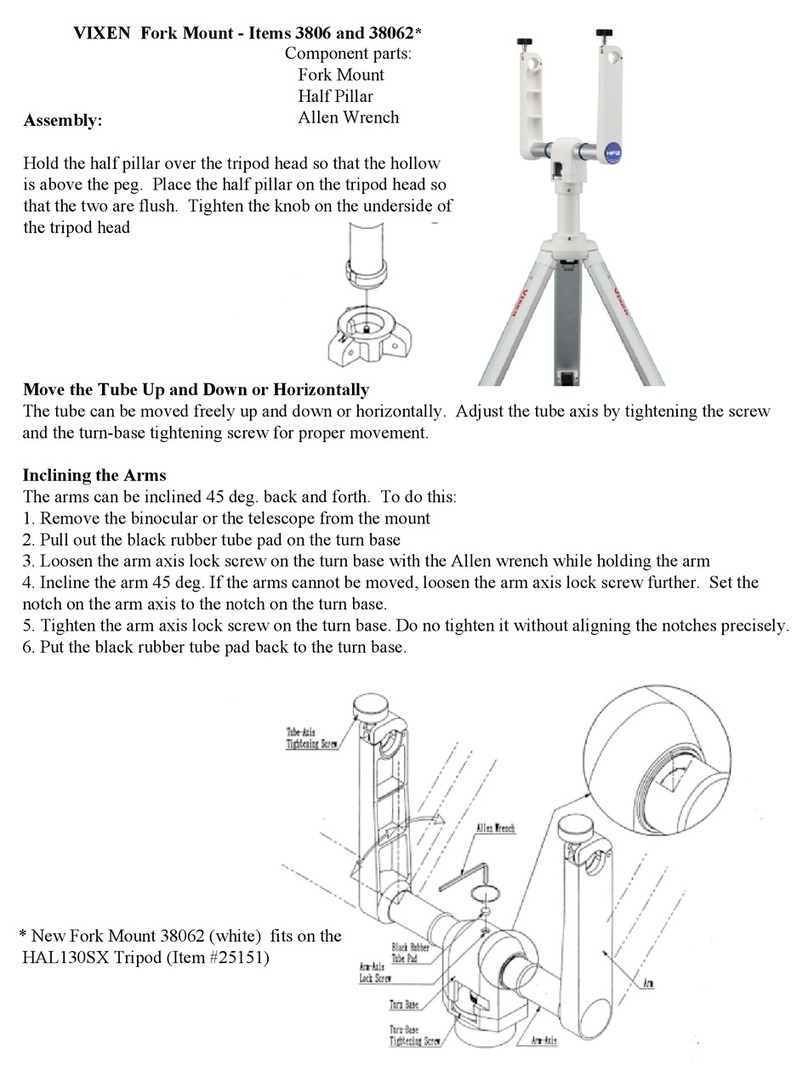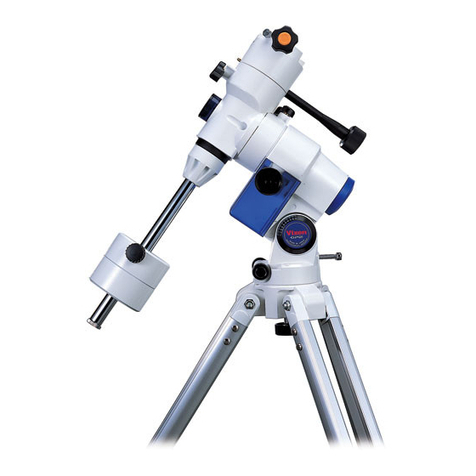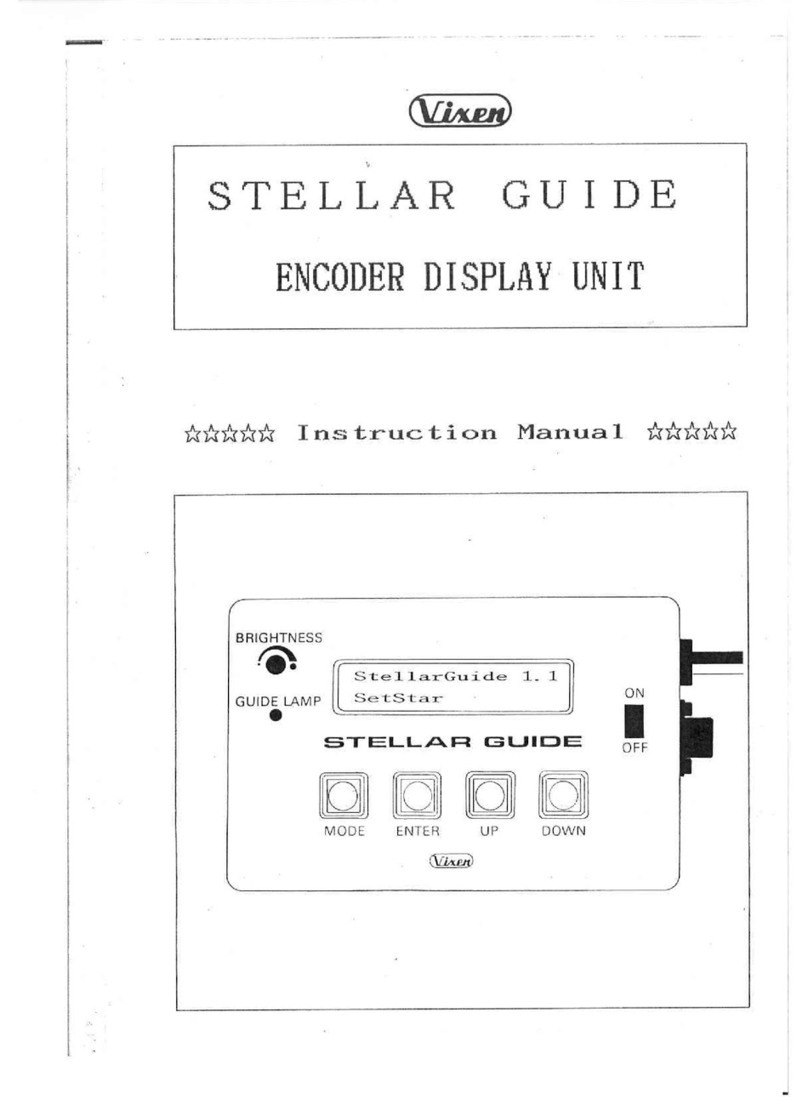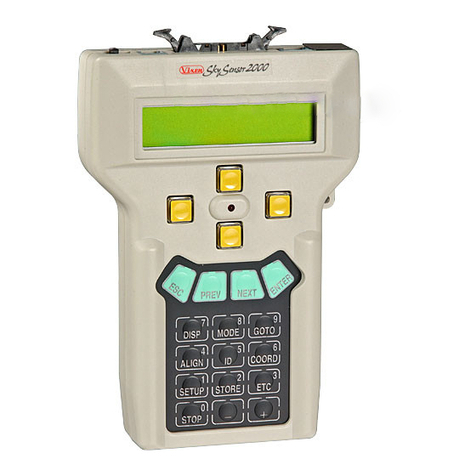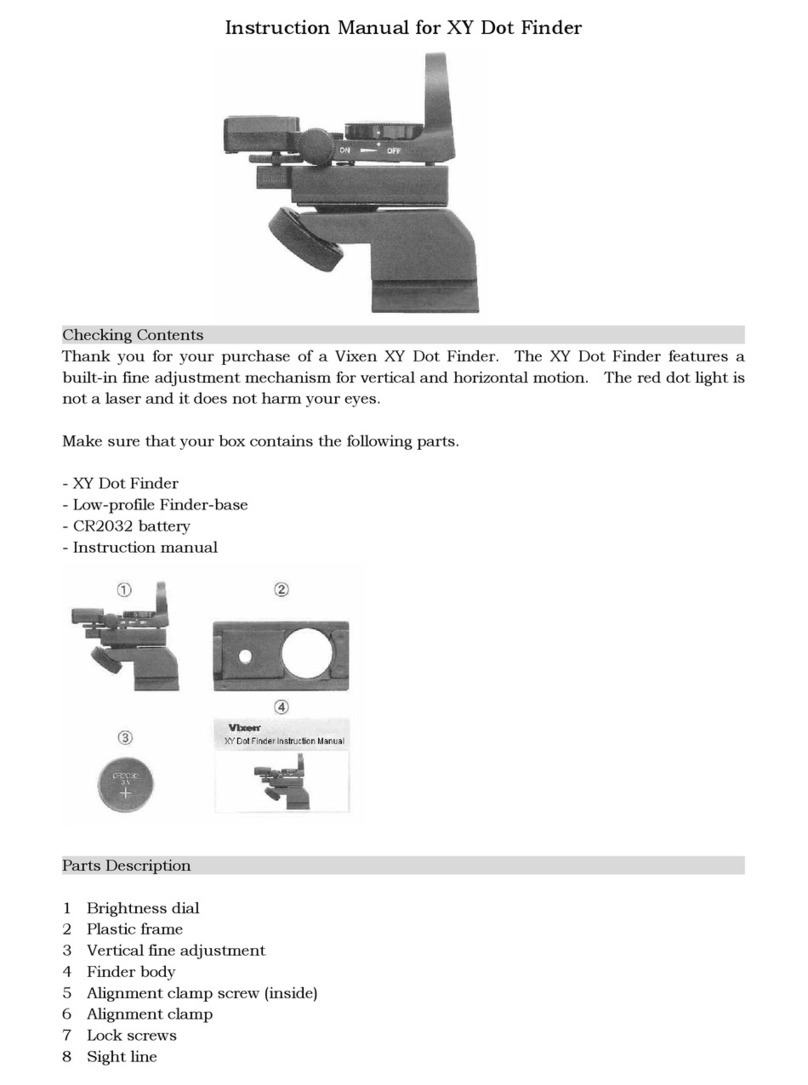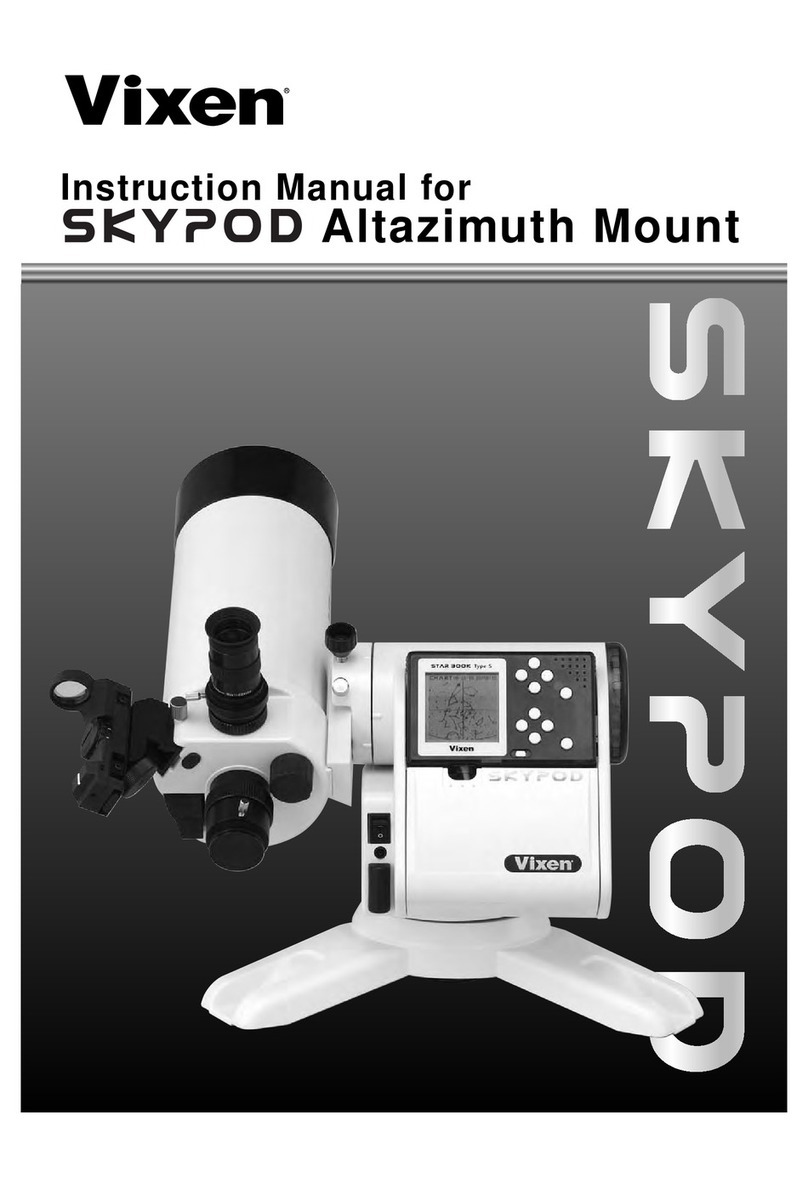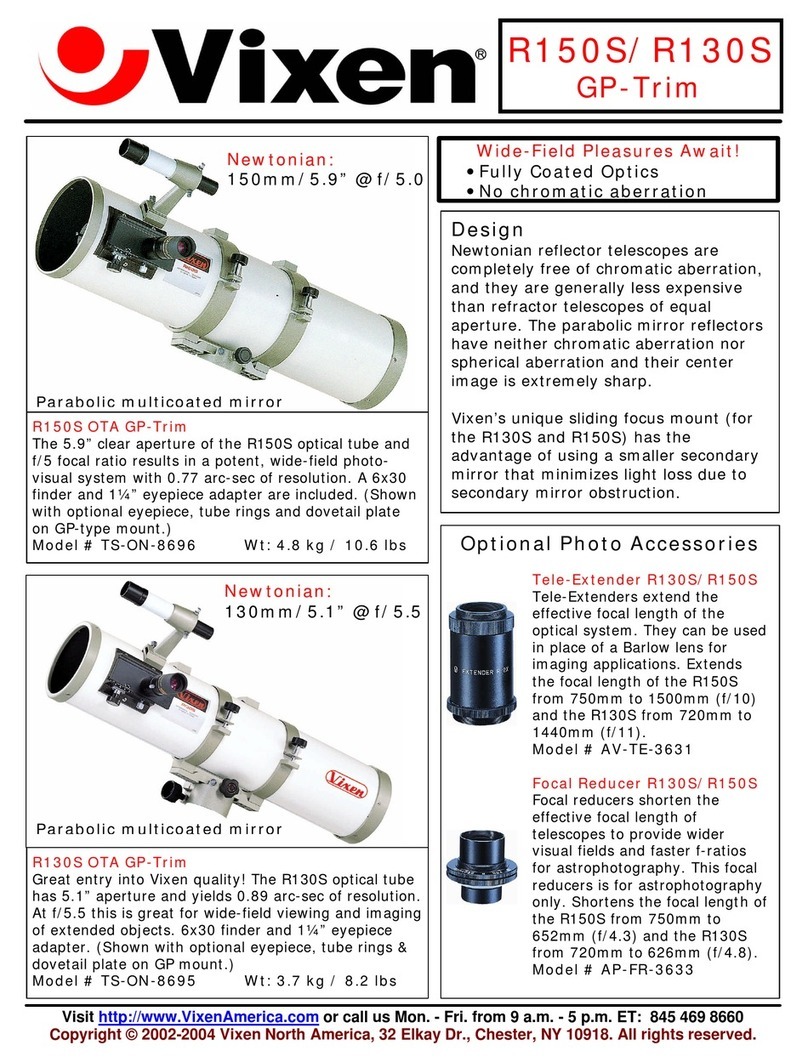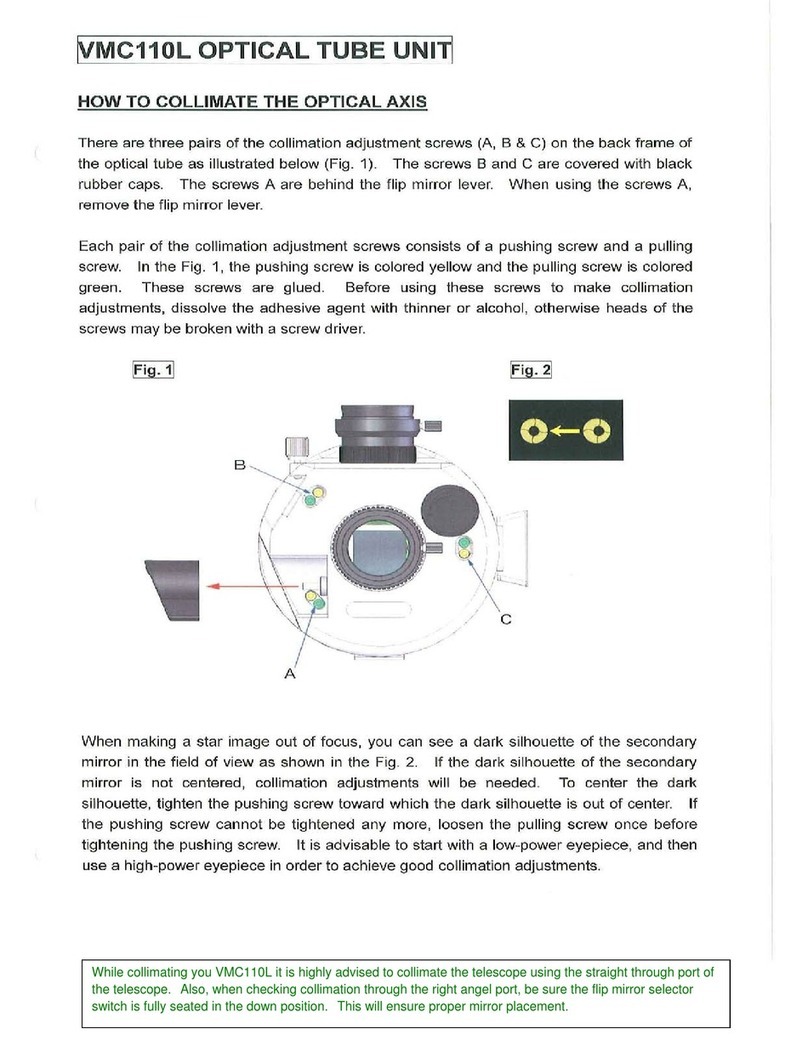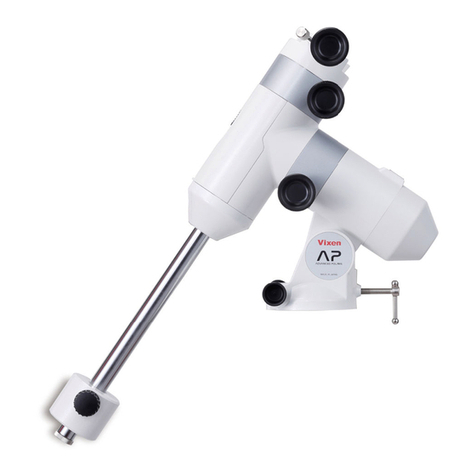
32
Astronomy TECHNOLOGY TODAY
VIXEN VMC200L AND SXD SPHINX DELUXE MOUNT
hit it. I felt this was important, given that the
rack and pinion focuser is not currently avail-
able with a dual speed option. I should note
though that JMI now offers an adapter for
equipping the VMC200L with its new Event
Horizon Crayford focuser for those who prefer
that design, but I found nothing to dislike
about the standard rack and pinion unit with
which the scope was equipped.
Another thing I noticed was that the
Vixen attracts attention. At the Star-B-Q event,
attendees stopped by frequently and asked
questions about it. They were very interested in
the scope and very impressed after viewing
through it. The large, red Vixen logo promi-
nently displayed on the OTA gives the scope
an air of superiority, and the build quality and
performance lives up to its looks. The glossy
white finish is durable and nice to look at, and
the scope is solid throughout. The flip mirror is,
in my opinion, something that could be im-
proved on, but as it is a removable accessory, it’s
not really an issue. Overall, this is just a really
nice, well performing telescope, and a very
unique one at that. Lightweight, portable, 8
inches of aperture, fast cool down, zero image
shift, and reasonably priced – I guess it may be
possible to have your cake and eat it too after all!
The Vixen SXD
Equatorial Mount
The Vixen Sphinx mounts have been
available for a few years now and are recognized
as a very solid and capable platform for the se-
rious observer and astrophotographer alike.
However, with the release of the new SXD
(Sphinx Deluxe) version of the mount, Vixen is
again pushing the boundaries of innovation
and quality.
Cosmetically, the SXD mount looks
nearly identical to the SX mount, aside from a
more classic black and white logo (as opposed
to the flashier translucent blue of the SX).
However, internally the SXD is definitely in an-
other league altogether. It features one-piece
hardened steel RA and DEC shafts with needle
bearings, 180-tooth brass worm gears, and a
gross load capacity of 50 pounds (including
counterweights). Yes, that’s right, 50 pounds!
Additionally, all of the features people have
come to appreciate in the SX mount are in-
cluded: the innovative Star Book controller, go-
to capability with a 22,000 target object
database, periodic error correction (PEC), and
the very nice SX polar finder scope.
The equatorial head is truly a work of art;
everything is solid and of highest quality. Like
the Star Book, there are some innovative fea-
tures here as well. The counterweight shaft
slides into the body of the equatorial head,
which makes it more portable for transport.
Additionally, the design of the front portion of
the head is well thought out. It appears that
Vixen placed much of the weight in the section
near the counterweight shaft, enabling the user
to achieve balance with fewer counterweights.
Consequently, I found that the 8-pound
weight, the larger of the two supplied with the
scope, was sufficient for countering the
VMC200L and the accessories it carried. In the
control area, there are only two cables necessary
for visual use: one for power and one for the
Star Book. A standard Vixen dovetail plate
makes mounting almost any scope a possibility.
The SXD that I tested was equipped with
Vixen’s renowned HAL-130 tripod and the legs
of that tripod are deceptively solid. While they
are made of aluminum, they don’t at all resem-
ble the flimsy legs used on many entry level
mounts. Unlike those designs, the HAL-130
doesn’t use the standard square-tube leg design
that loses stability as the tripod is extended. In-
stead, one section of each leg of the HAL-130
fits entirely inside of the other, and both are
formed in a solid, one piece design. They’re
made of thick aluminum, so there are no weak
parts to sacrifice stability. Best of all, they’re
much lighter in weight than the standard tube-
steel fare, but not so light in weight that the
mount is top heavy. With the eyepiece tray at-
tached, I found the tripod/mount assembly to
be very solid, with dampening times well under
two seconds. With the 8-inch VMC200L
mounted, the SXD hardly knew it was there.
It’s safe to say that the SXD would make an ex-
ceptional platform for serious astrophotogra-
phy.
The Star Book controller is simply a whole
lot of fun to use. Its 4.7-inch color LCD display
renders controllers with one line of slow mov-
ScopeBuggy
MAKING VIEWING EASIER!
• For use with most tripods, DOBs and piers
• Load tested to 600+ pounds
• Assemble in minutes for use or storage
• Pneumatic inflated 10” tires for soft ride
• Gloss Black powder coat paint
• Optional battery equipment tray
• Adjustable rear axle height, 1 1/2” to 7”
• Anodized gold wheels
• One person can move any size scope
quickly and easily
• Ideal for the new Meade RCX Series
• Ideal for the Meade LightBridge Series
• Ideal for scopes up to 36”
SCOPEBUGGY
P. O. Box 834
Elephant Butte, NM 87935
Toll Free: 866-312-8449 WE ACCEPT: VISA – MASTERCARD – AMERICAN EXPRESS
PAYPAL – MONEY ORDERS – CASHIERS CHECKS
Plus S&H, Approx.
$30 Shipping USA
Shipping weight 36 lbs.
shipped UPS ground
Patent Pending
Please visit us at
www.scopebuggy.com
$295
